The Western Fells
The Western Fells was published in April 1966 and was dedicated to:
“ALL WHO HAVE HELPED ME”
<<>>
Wainwright concluded his 13-year odyssey in December 1965, a week ahead of schedule. Compiling this extensive work during his leisure time is a remarkable achievement. Notably, he meticulously mapped the entirety of the Lake District while concurrently maintaining a crucial civic role in Kendal. His choice to traverse vast distances primarily through public transport adds further commendation. Before the series reached its culmination, the guides had already evolved into indispensable reading for every fellwalker in Lakeland—a status they still hold.
In 1965, a moderate price adjustment raised all guidebooks from 12/6 to 15/-. The Western Fells initiated this new pricing structure, being the first book in the series to bear the updated 15/- price tag. This adjustment was the first in a decade, so there was little room for complaint.

Wainwright found delight in exploring this region, but he couldn’t ignore the increasing flow of tourists. As the spring of 1965 unfolded, there was a pressing sense of urgency to finish mapping the area before the end of the summer bus service. Undertaking what seemed an impossible task, Wainwright grappled with challenges, particularly in reaching the more secluded fells near Loweswater. In a letter to a walking friend (a banker from Keswick), he said he’d completed the book “…but only after much shameful use of taxis.”
Given the comment’s ambiguity, I took the initiative to locate the letter’s previous owner. Confirmation was obtained that Wainwright was indeed referring to ‘paid’ taxis. Regardless of the mode of travel, his accomplishment remained remarkable. In the western region, where bus services were restricted, the Borough Treasurer likely had little choice but to opt for taxis.
Under “Some personal notes in conclusion” at the back of the book, Wainwright highlights his preferred fells from the comprehensive series. Additionally, he discloses that the profits generated from the guides will be directed towards the first Animal Welfare Centre to be established in Kendal.
Wainwright wraps up by revealing his intentions to create a series of additional books. The first is titled A Lakeland Sketchbook. He is also contemplating a future publication named Fellwanderer, aiming to provide a personal narrative of his experiences in the fells. Concluding his future projects, he commits to delivering A Pictorial Guide to the Pennine Way, emphasising that it will be a collaborative endeavour.
With retirement from his day job now only a year away, Wainwright showed no signs of slowing down.
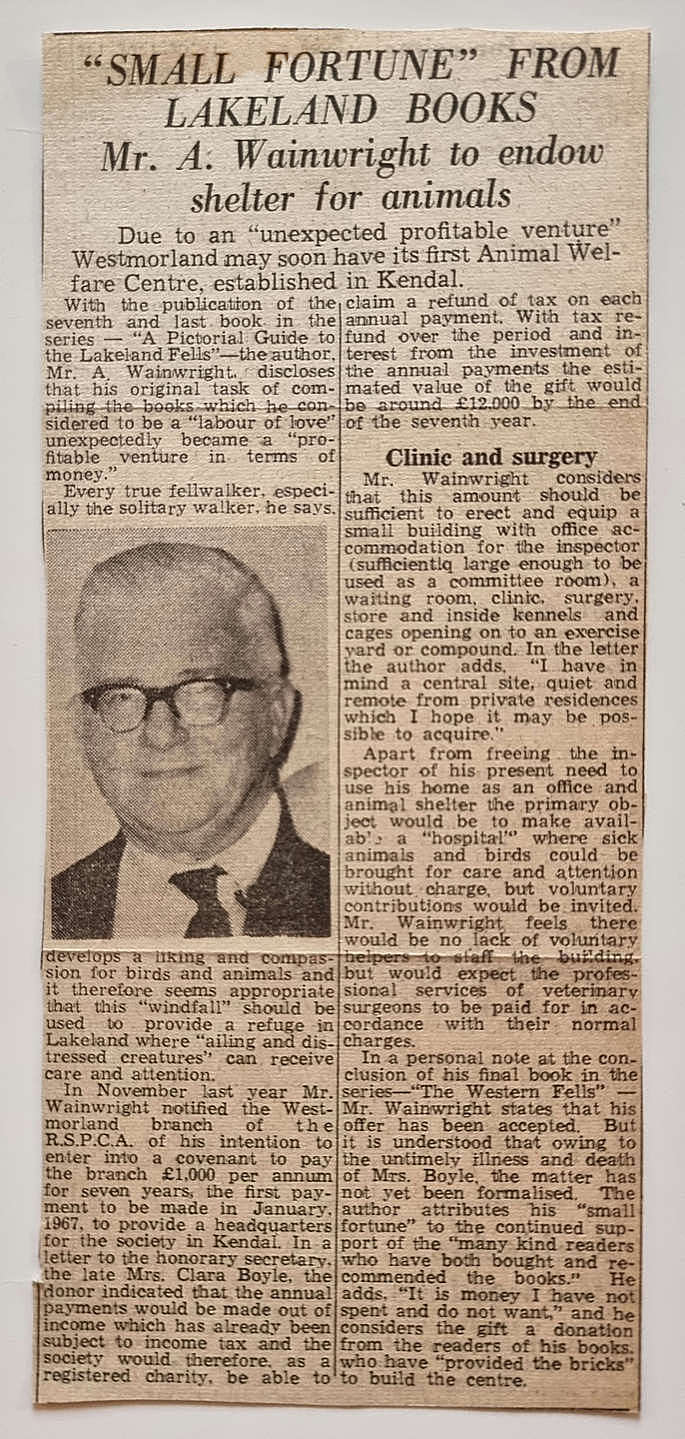
The Western Fells achieved significant sales success. Assessing the series and pinpointing the most popular guide during the Gazette years proves challenging due to their individual and prolonged publication over time. Subsequent historical analysis would establish The Southern Fells as the top-selling guide, though this alone does not unveil the complete narrative.
After meticulously analysing the sales history of each guide, I have formulated a hypothetical scenario, assuming a simultaneous publication for all guides. According to the established criteria, the following represents the new order of the bestselling guides:
- The Southern Fells
- The Western Fells
- The Central Fells
- The North Western Fells
- The Eastern Fells
- The Northern Fells
- The Far Eastern Fells
In this revised scenario, The Western Fells nearly tied for the top spot with The Southern Fells, as there is a minimal difference in their sales figures. This nuanced information has always captivated my interest, offering insights into the popularity of different regions during that period. Surprisingly, The Far Eastern Fells sold approximately half as many copies as The Southern Fells. This observation reveals that not all buyers of the Pictorial Guides opted to acquire the complete collection.
<<>>
A First Edition is identified by:
- Light green case with round corners and gold blocking
- 15/- price on the dust jacket
- No impression number

Over the subsequent twenty-five years, the content of the book publication page in all seven guides remained consistent. However, inexplicably, before the end of 1966, Wainwright chose to omit a brief passage from the text: “…Besides, the author is getting too doddery to go over all the ground again…” Maybe he felt it no longer served a purpose or fit the tone here.

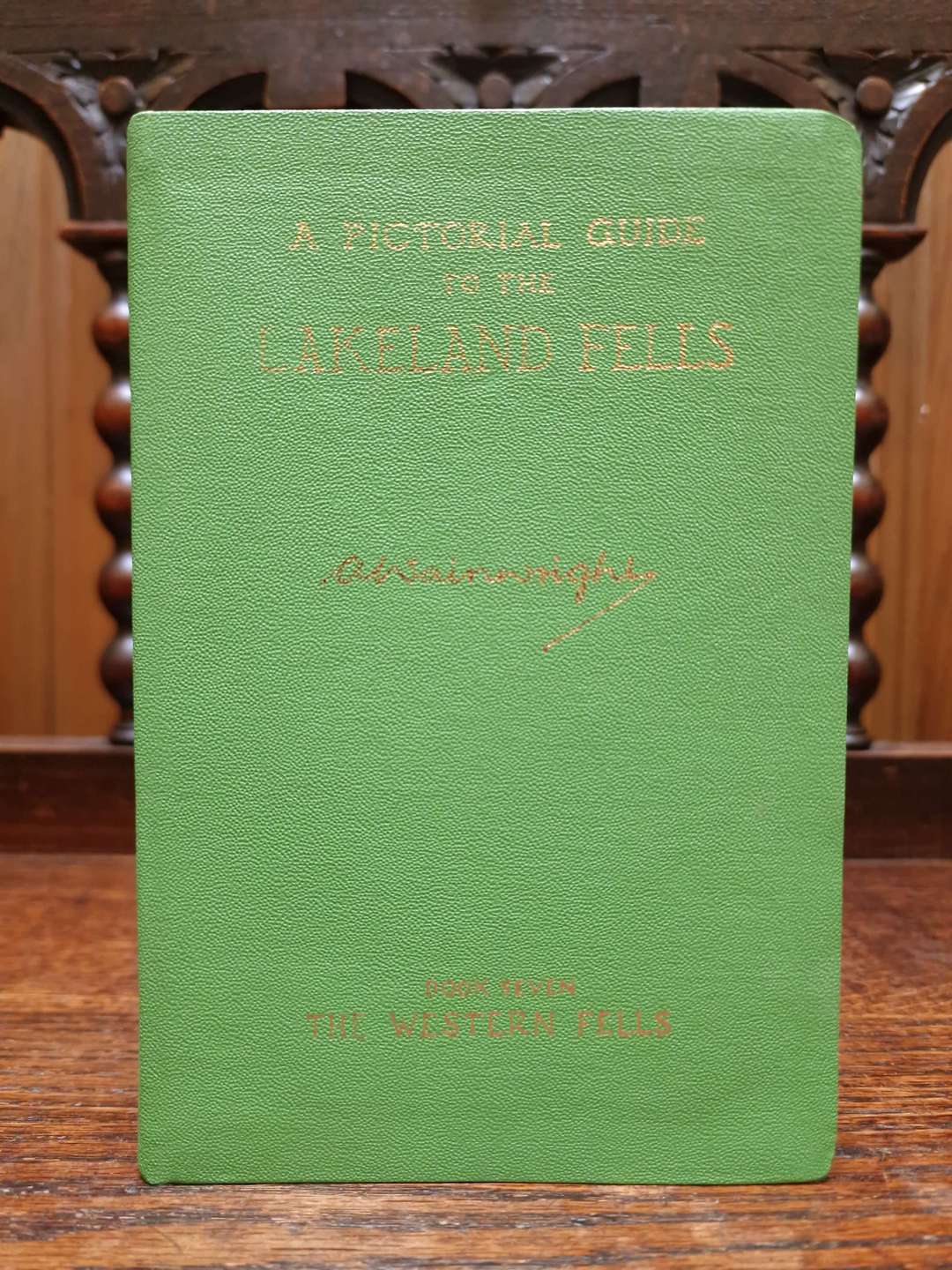
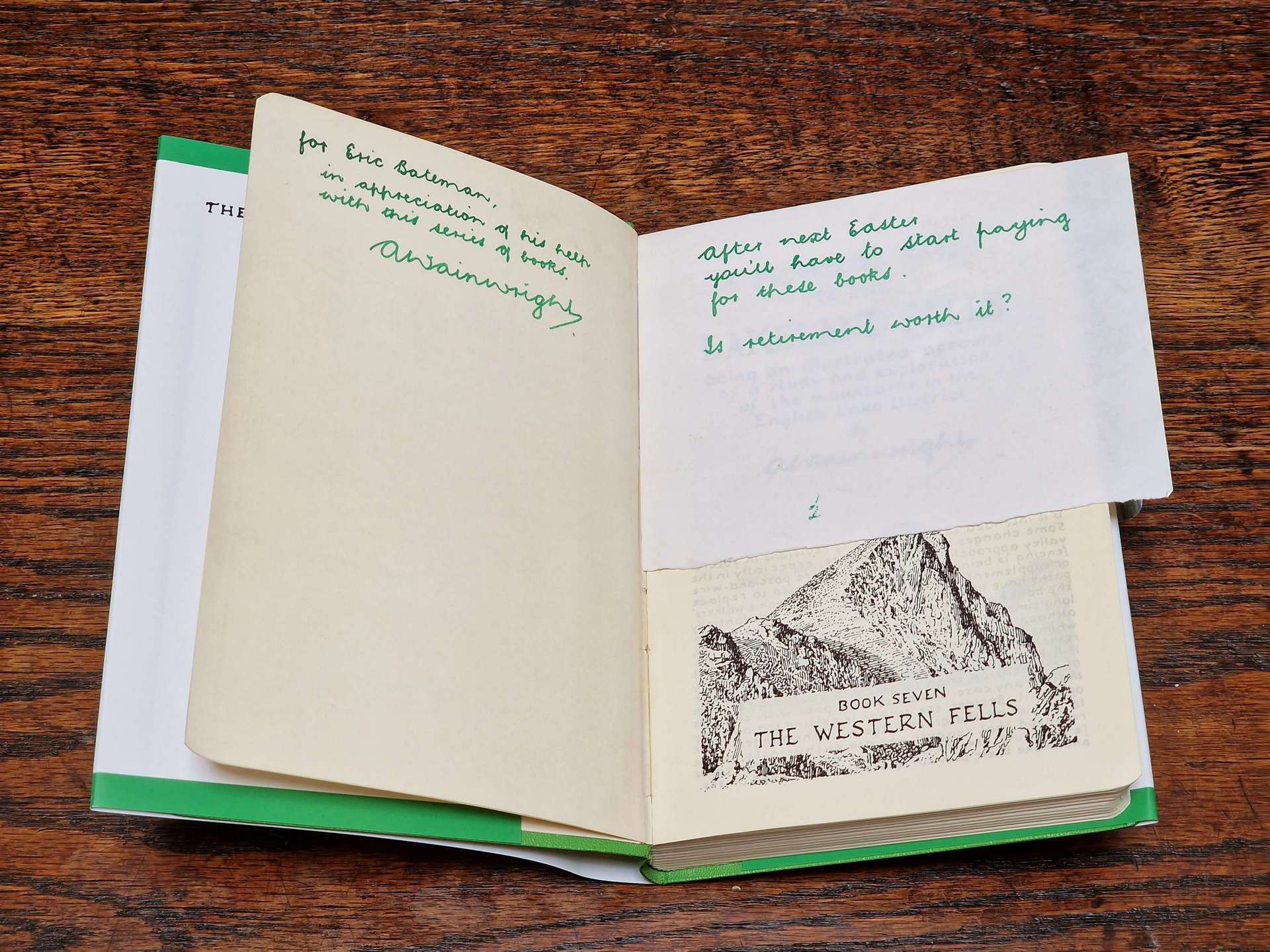
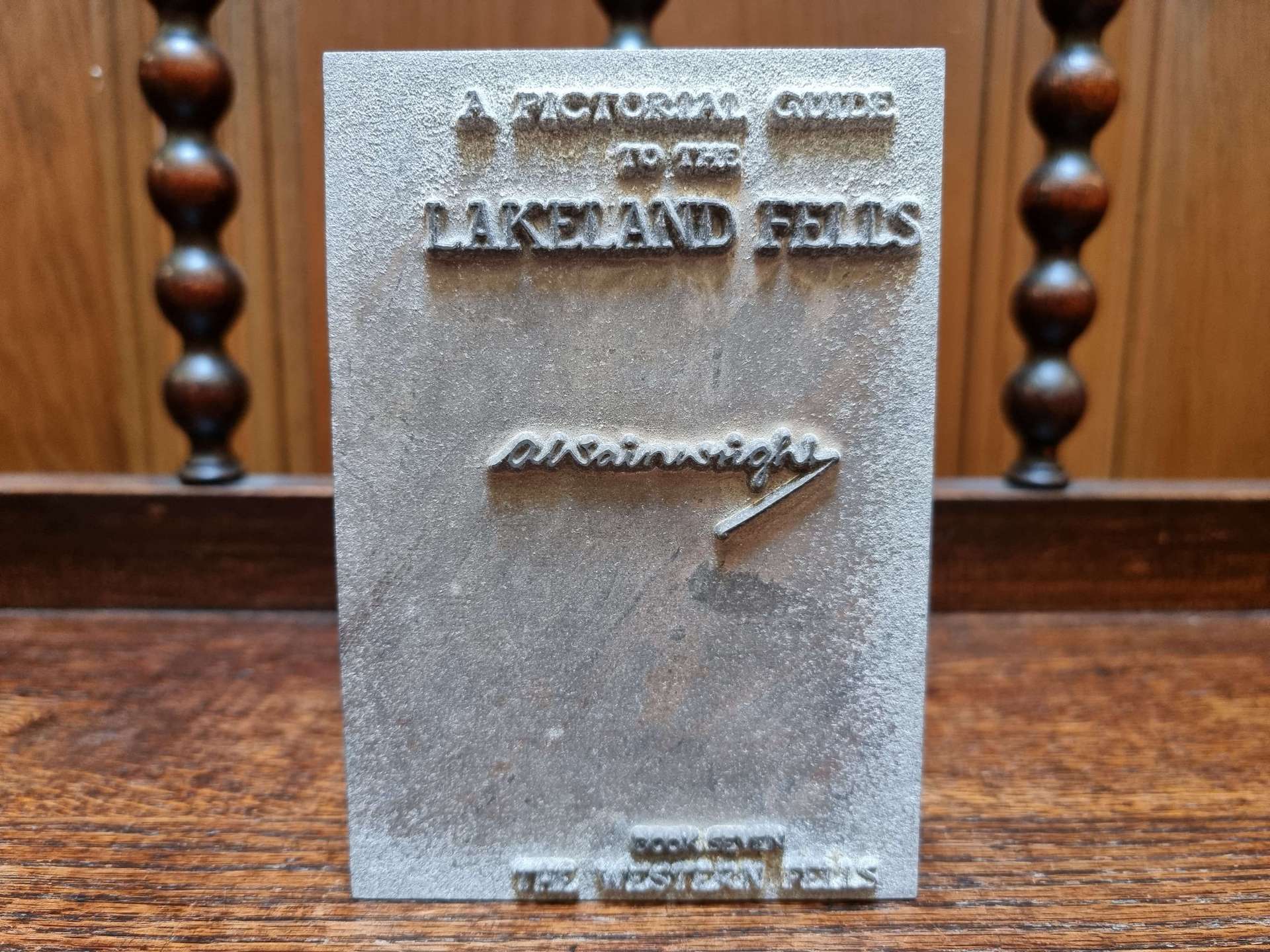

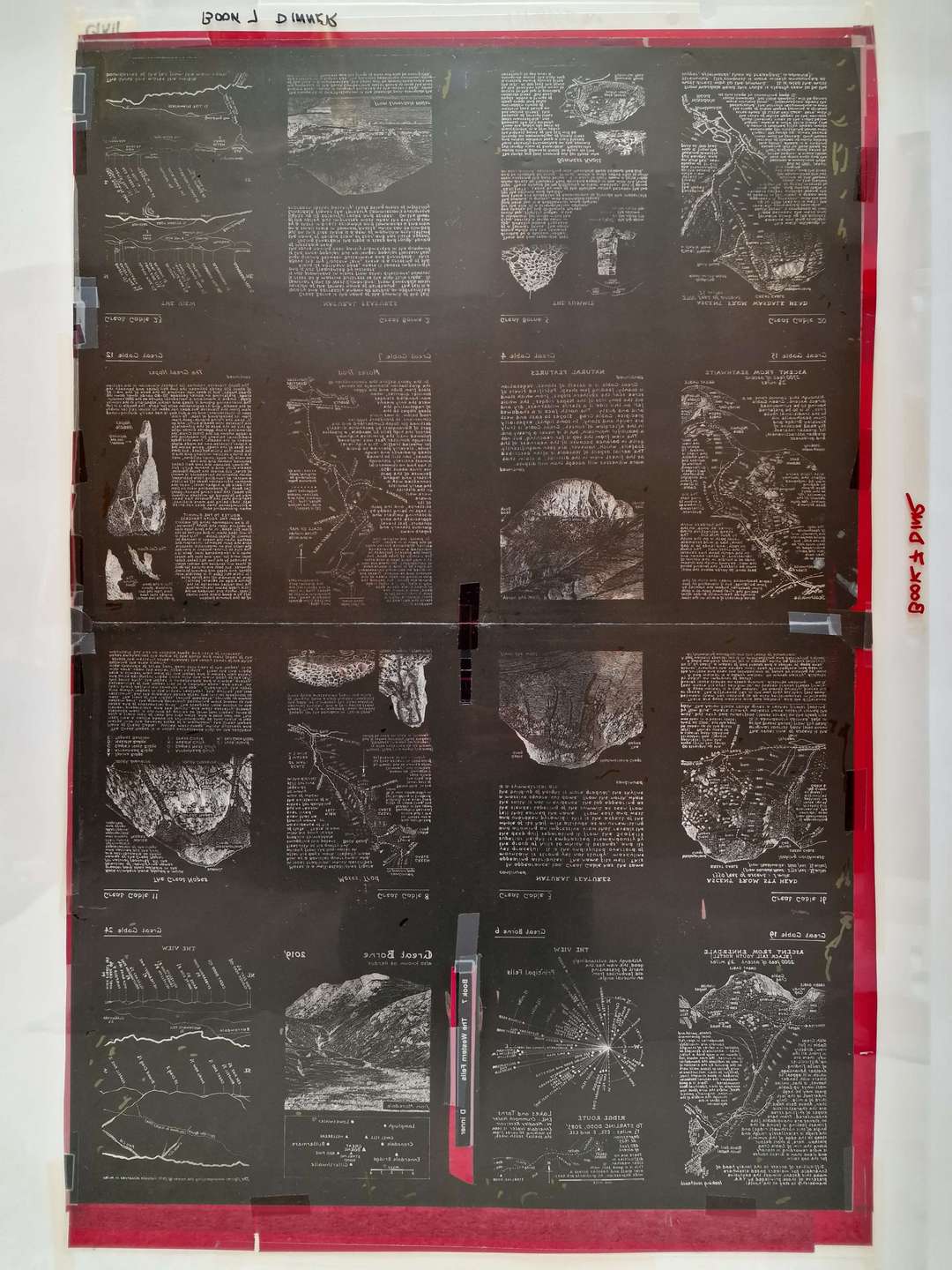




Rather than producing new jackets, the Gazette opted to affix stickers over the original 15/- price. However, within less than two years of publication, the price escalated to 18/-. Given the imminent arrival of decimalisation, investing in new jackets with the updated price might have been deemed a futile expenditure of time and money.
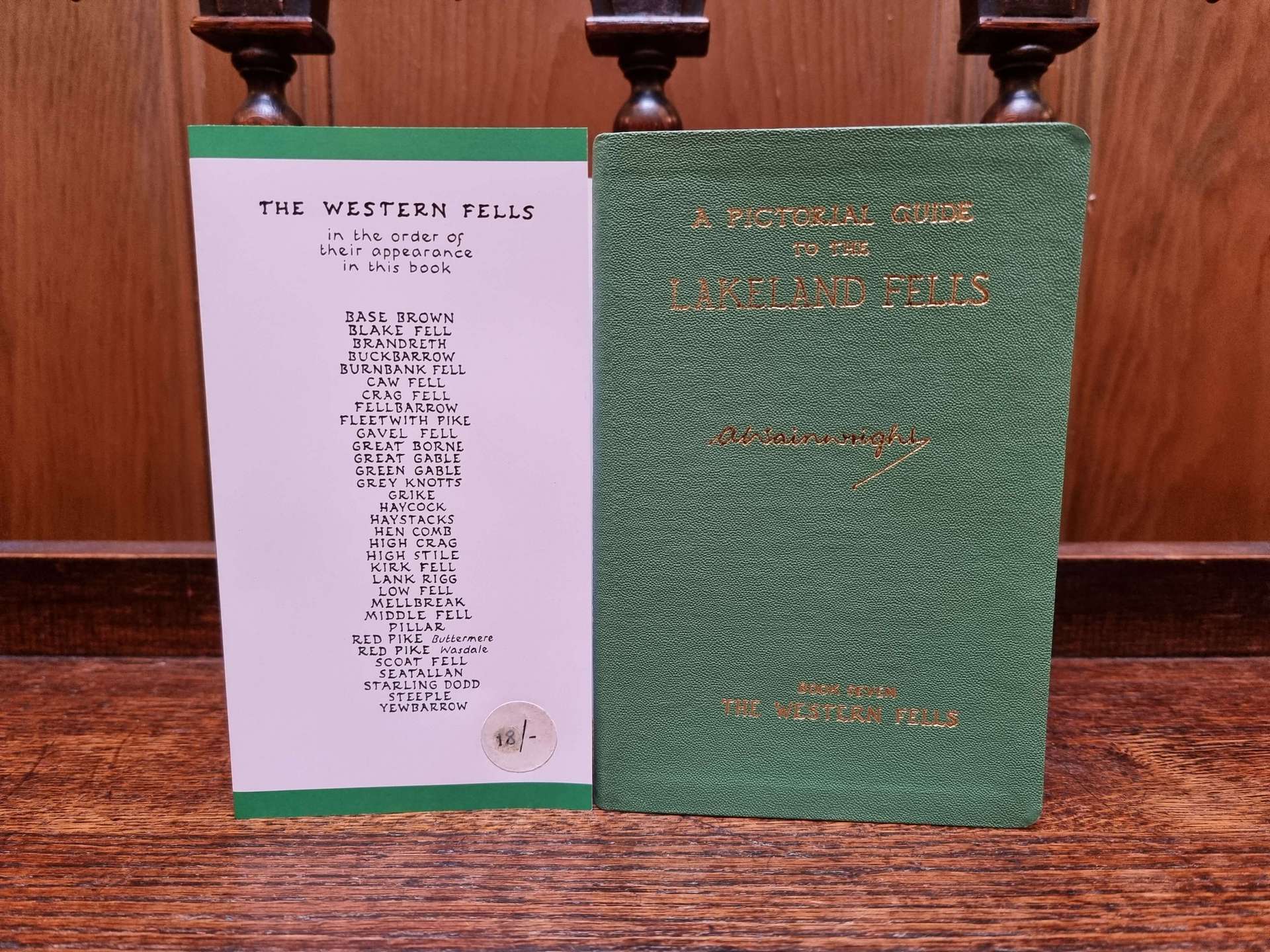
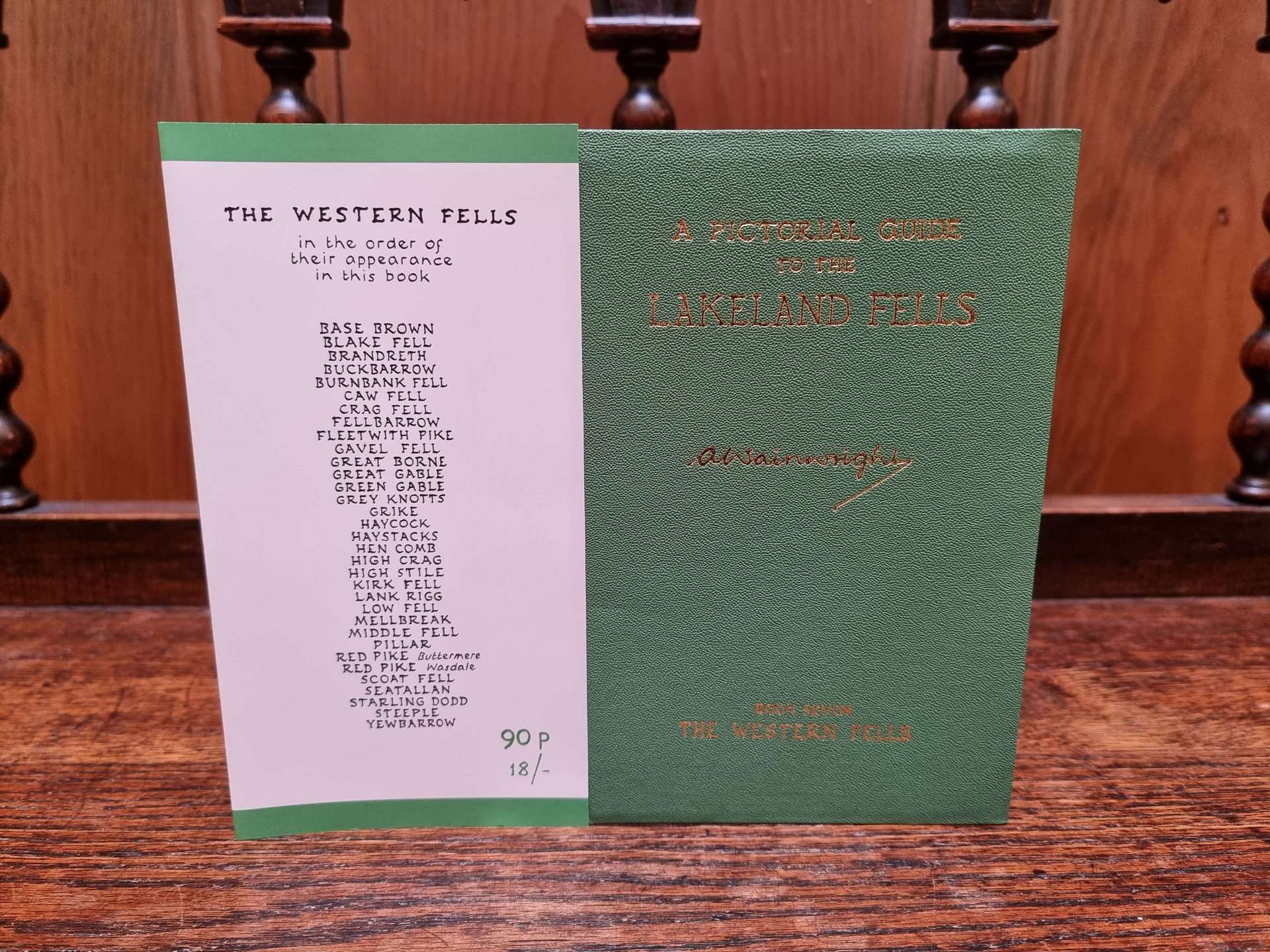
The guidebooks underwent several noticeable physical transformations throughout the Gazette years, primarily regarding their case colours. The Western Fells experienced the fewest alterations, maintaining a consistent green colour for most of their existence, with only occasional variations. Like their counterparts, all guides showcased exquisite gold blocking on the front of their cases, a distinctive feature that persisted until the late 1970s.
During the 1970s, various case types were scarce, leading to the utilisation of alternative cases. This resulted in instances where identical impression numbers were bound using different case colours.
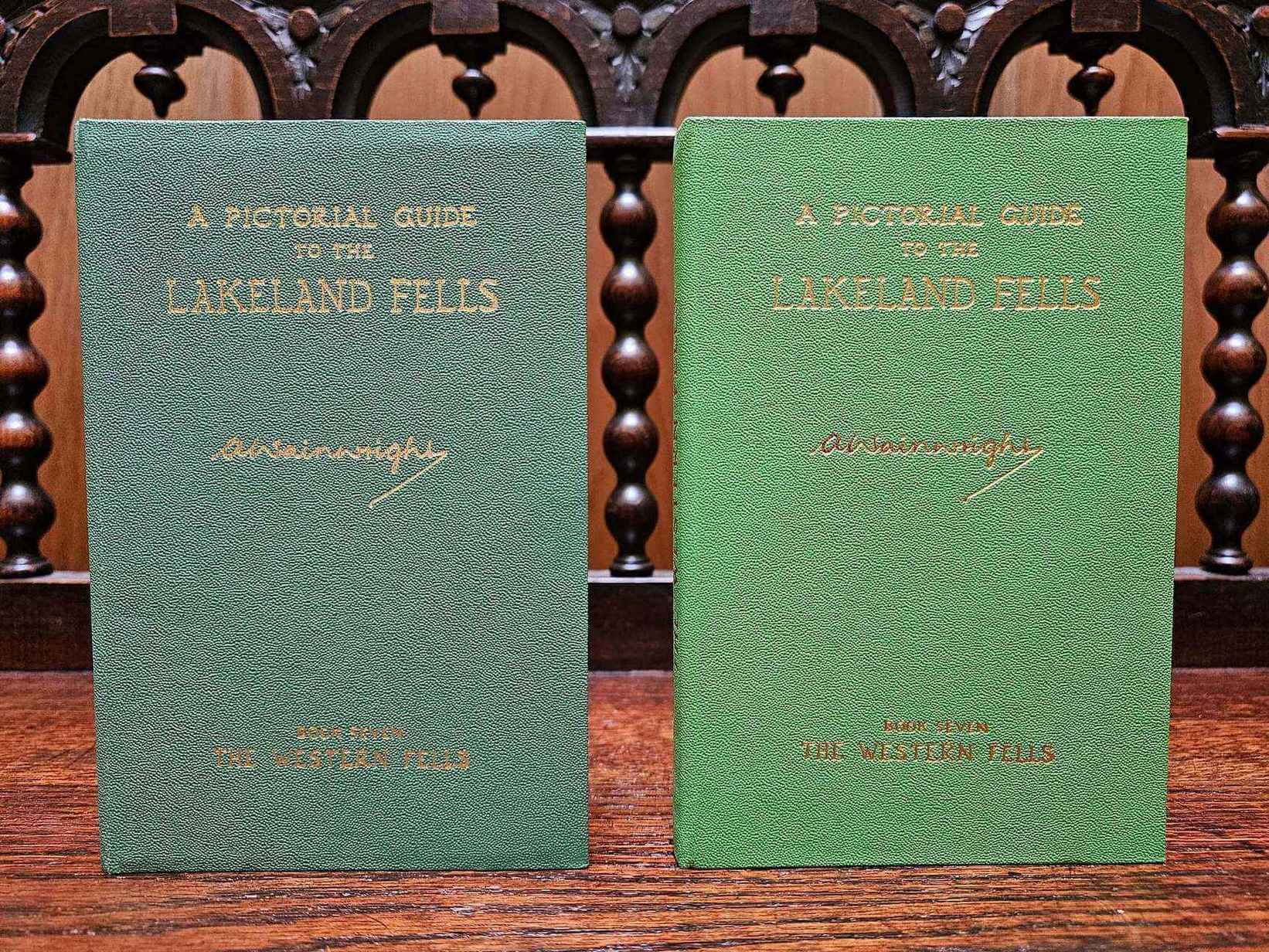
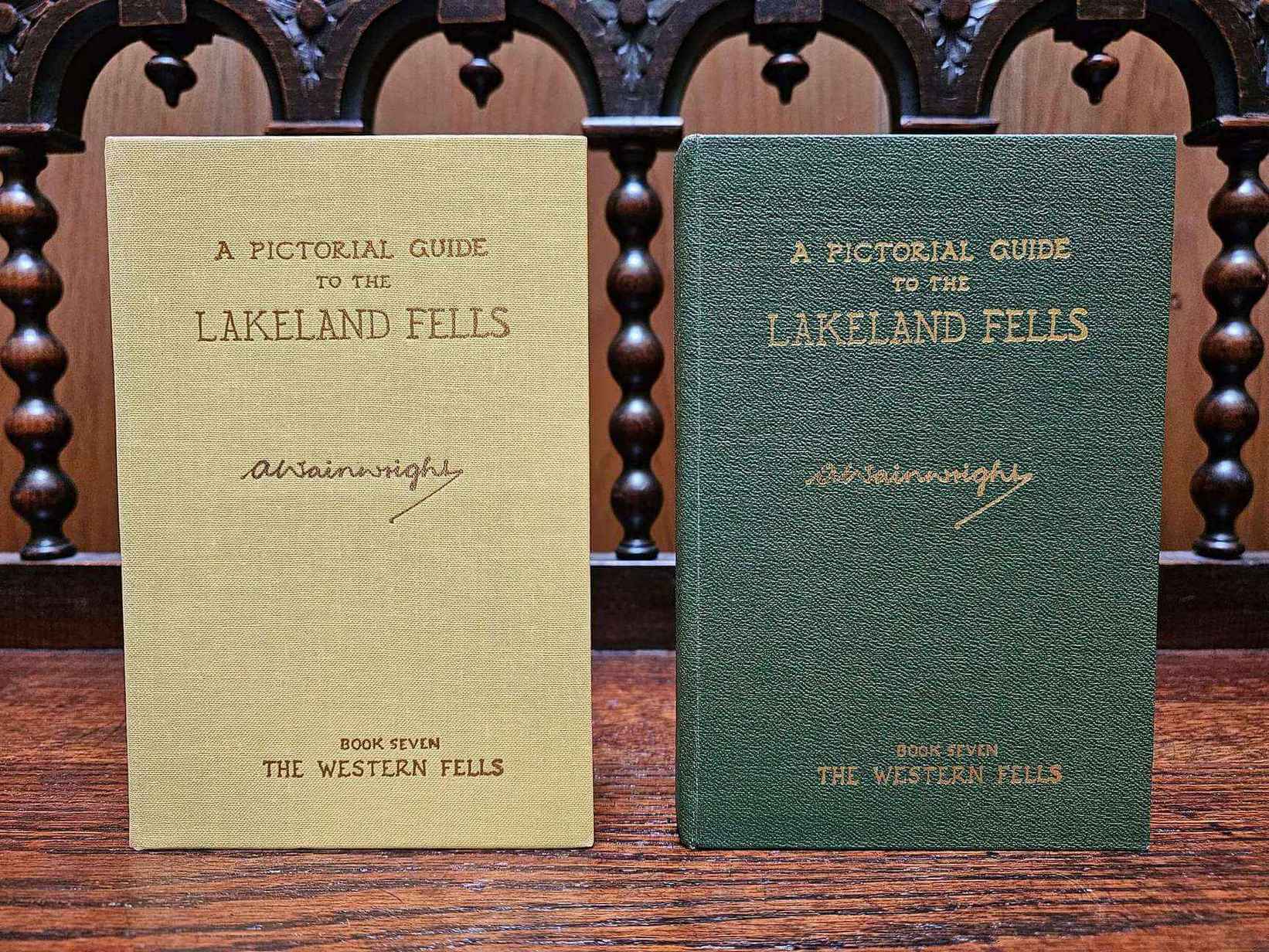

In the mid-1980s, the Gazette implemented cost-cutting measures by eliminating the gold blocking from the front of the cases. As of 1985, impression numbers were also discontinued, and guides priced from £5.50 onwards no longer featured them.






The last printed dust jacket prices were set at £3.00, and from that point onward, jackets included stickers indicating the new prices. The initial stickered price was £3.45, and this change prompted the removal of the old prices from the dust jacket negatives.
The Gazette ordered the last batch of 3,000 copies of The Western Fells following Wainwright’s death in January 1991. The printing and delivery process spanned three months, with Andrew Nichol, the General Printing and Book Publishing Manager, overseeing and approving all book orders.

In 1992, the publishing rights were shifted to Michael Joseph, and Titus Wilson in Kendal continued to print the guides. The initial launch under the new arrangement proved successful in the spring of that year. However, contrary to Wainwright’s preferences, the second impressions were printed at Clays Ltd in Suffolk, resulting in a disappointing outcome.



After a decade away, the guides made their way back to Kendal. Michael Joseph discontinued publishing the guides by 2003, and Frances Lincoln became the new publisher. The return to Kendal and the change in publishing hands were welcomed as positive developments, with the Gazette being one of the first to make an official statement:
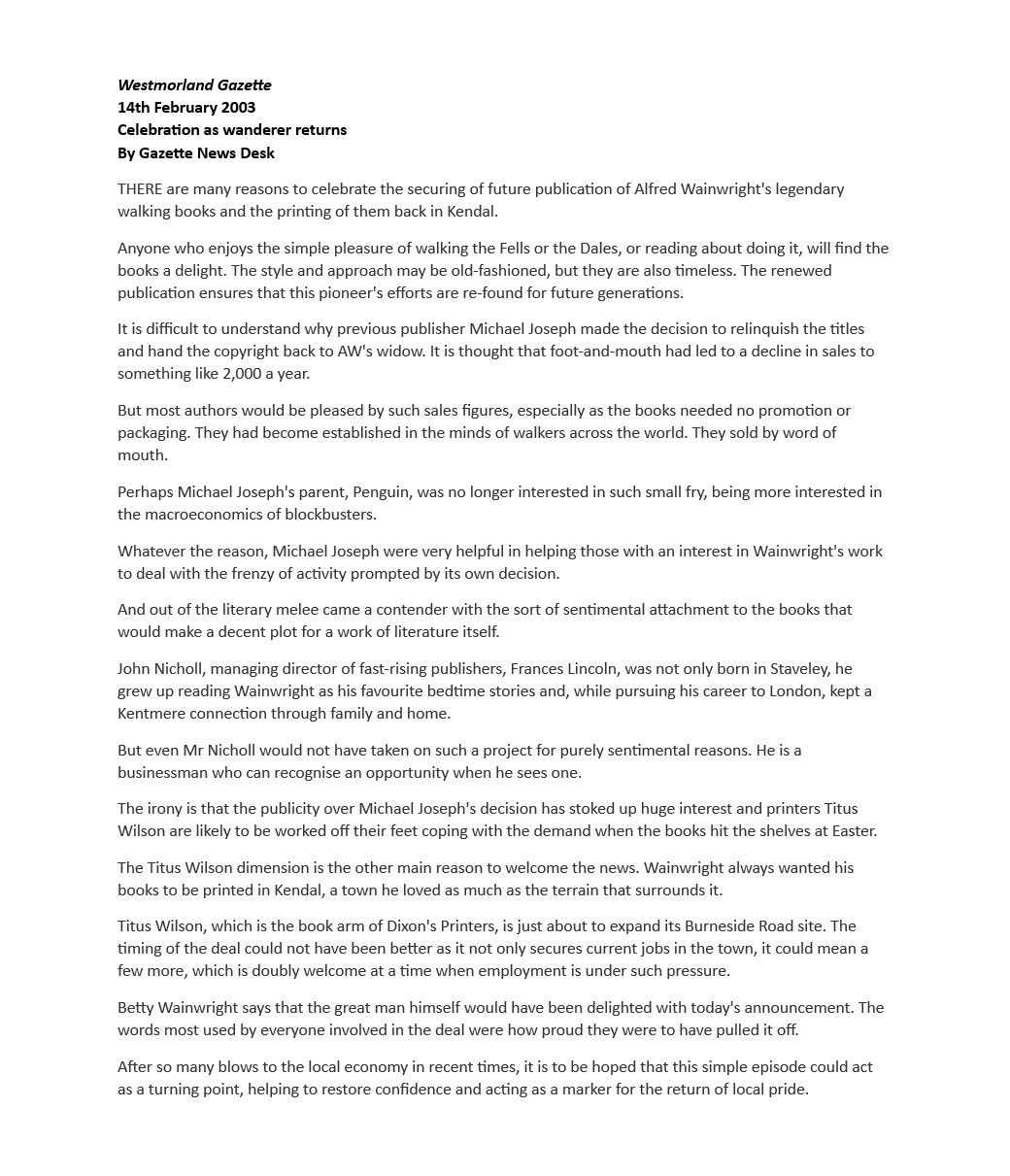



In honour of The Eastern Fells 50th anniversary, Frances Lincoln embarked on a celebration by creating new guides using scans derived from Wainwright’s original artwork. To maintain authenticity, Croppers of Burneside produced the paper to match that of the earliest editions. Additionally, Frances Lincoln released a Limited Edition Leather-Bound box set. The guides were complete and ready for publication in March 2005.
In 2006, three years after returning to Kendal, the book printing operations underwent another relocation. However, the situation worsened as the printing process moved out of the country entirely.

From left to right:
The Western Fells (50th), F. Lincoln 2005
The Western Fells (50th) Leather-Bound, F. Lincoln 2005
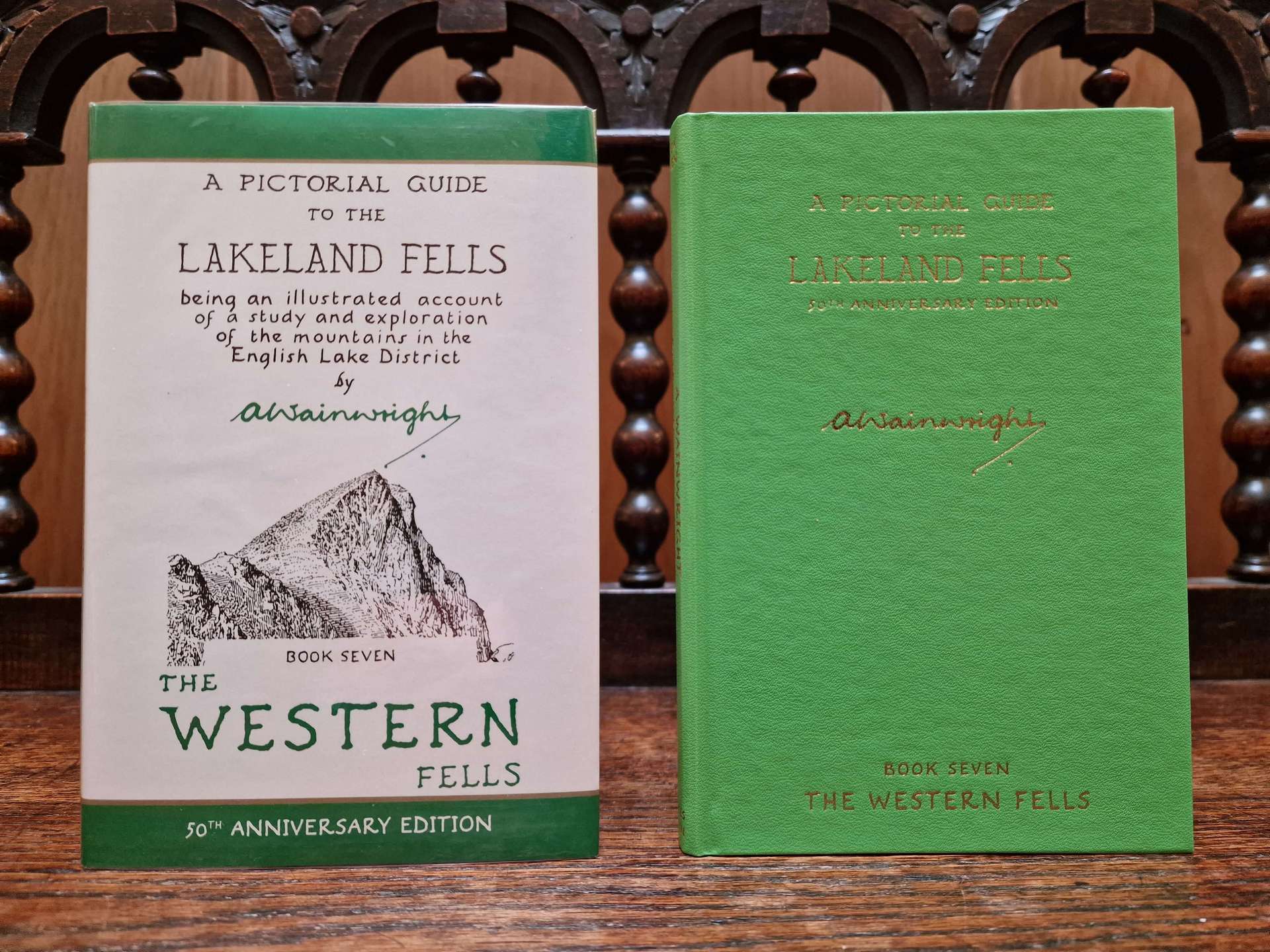








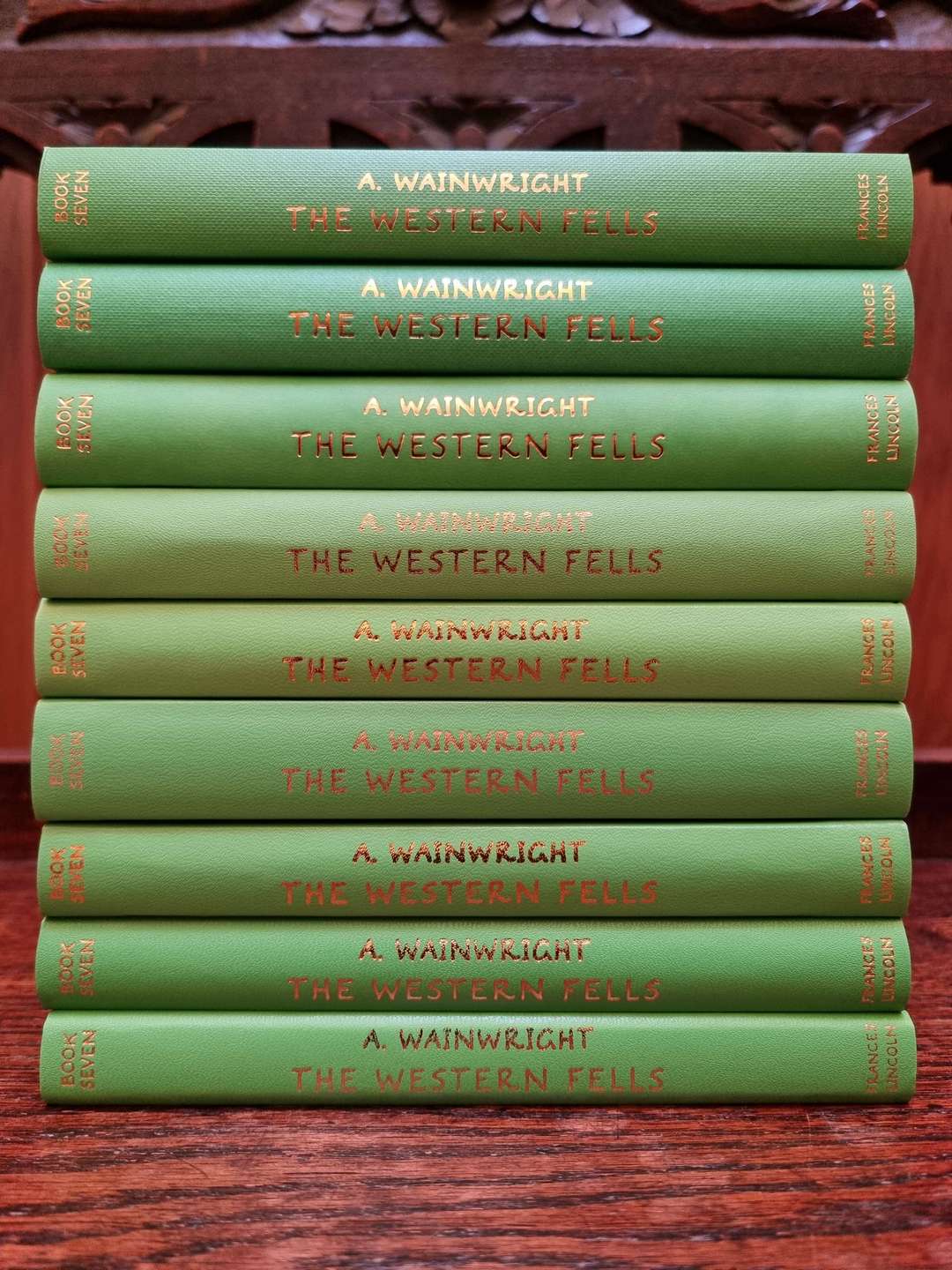
The 50th Anniversary Editions debuted in paperback format in June 2023 and were presented as a box set. See the Wainwright Box Set Collection for details.


Alongside introducing the 50th Anniversary Editions, Frances Lincoln revealed plans for a thoughtful and thorough program of revising the guides. The updating was to be led by Chris Jesty, an author and cartographer based in Kendal. Over ten years, Jesty delicately revised all twelve guides, introducing a sensitive and comprehensive update for the first time in the series’ history.
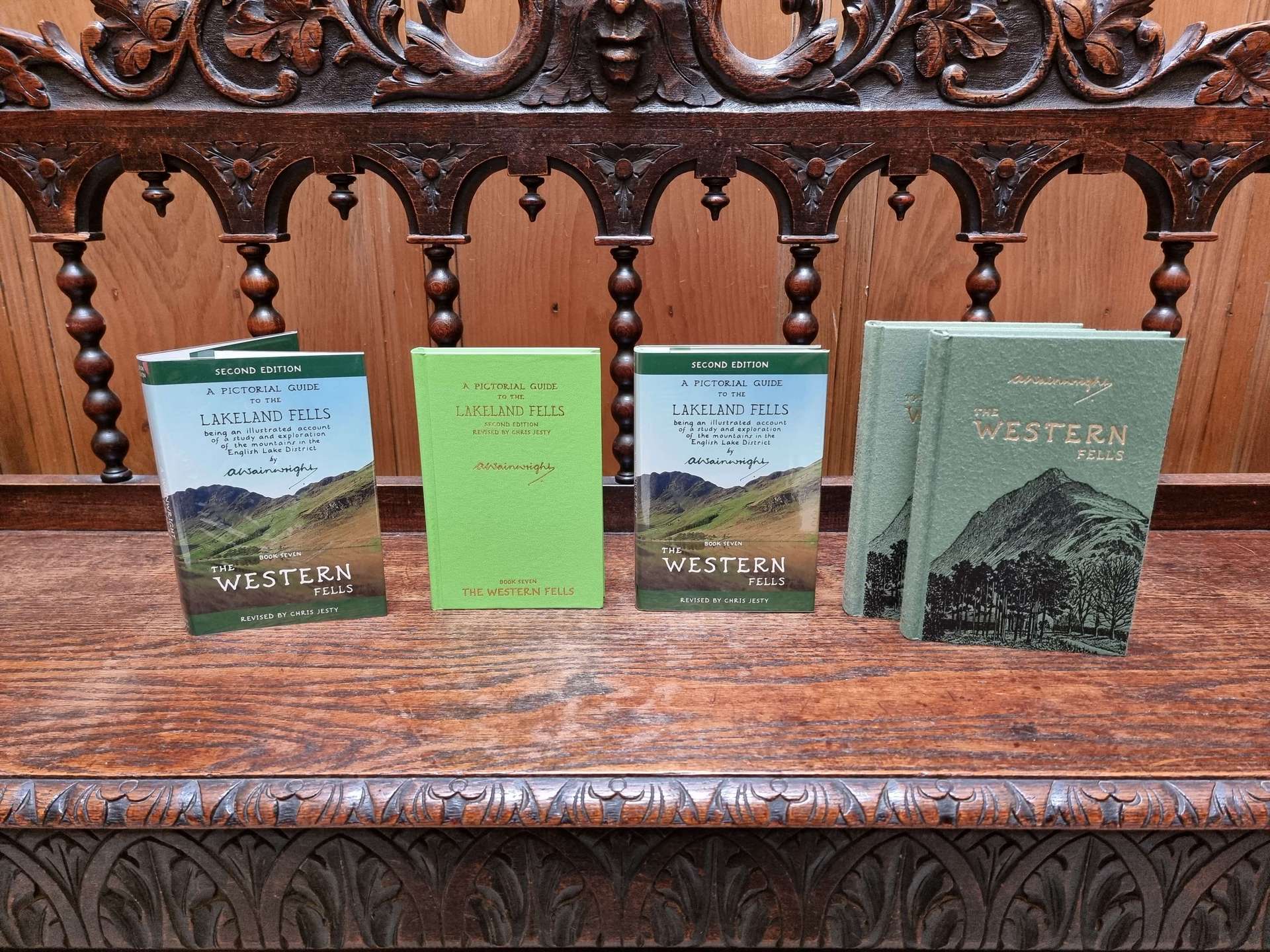
From left to right:
The Western Fells (SE), F. Lincoln 2009
The Western Fells (SE) later print, F. Lincoln 2009
The Western Fells (RE) low gsm paper, F. Lincoln 2009
The Western Fells (RE) high gsm paper, F. Lincoln 2009
Quarto acquired Frances Lincoln in 2011 but retained the already well-established name. In 2015, the 50th Anniversary Editions gave way to the Readers Edition. This new series was introduced gradually, with each guide released individually over several years. Printed in limited quantities, the Readers Editions swiftly became one of the most difficult sets to acquire. Notably, The Western Fells has proven to be particularly elusive.
As of 2014, Chris Jesty’s revised guides became outdated, and Clive Hutchby took over the revision process. Hutchby started afresh, undertaking a comprehensive revision of the guides. This resulted in The Walkers Editions, which was presented in a new flexibound format.
The Western Fells – Walkers Edition was scheduled for publication in 2020. However, the entire batch had to be recalled due to multiple printing errors. A subsequent reprinting ensued, causing a slight delay in the official launch by a few weeks. Eventually, both the Readers and Walkers Editions became printed as paperbacks.
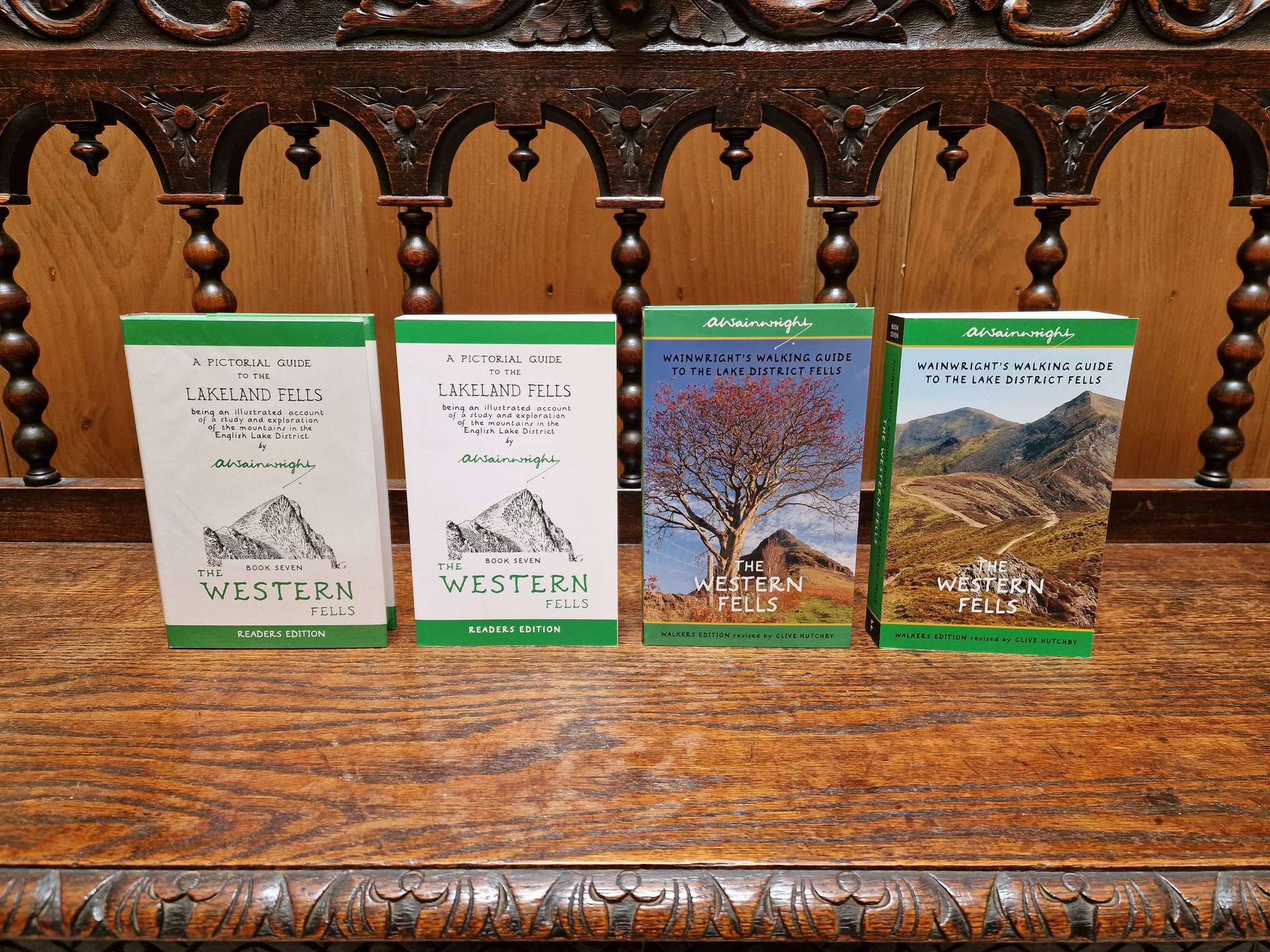
From left to right:
The Western Fells (RE) hardback, F. Lincoln 2015
The Western Fells (RE) paperback, F. Lincoln 2020
The Western Fells (WE) flexibound, F. Lincoln 2020
The Western Fells (WE) paperback, F. Lincoln 2022


